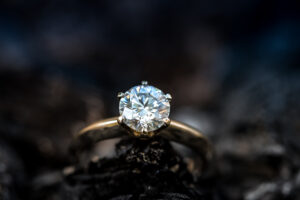
The word clarity refers to diamond blemishes and inclusions. The fewer the blemishes and flaws, the higher will be the GIA clarity grade of a diamond. Clarity may not affect the worth of the stone a lot as minor flaws are not generally visible to our bare eye. Blemishes are known as surface flaws, whereas inclusions are internal defects. Those factors do not usually affect a diamond as most inclusions are invisible. Gemologists tend to use the word internal characteristics when referring to diamond inclusions. The characteristics offer the stone its character.
The processes of growing and cutting lab grown diamonds necessitate many weeks, but only some of those stones end up in a perfect state. Diamonds are usually imperfect stones, with varying levels of internal flaws and blemishes. Keep reading to know more about diamond clarity so that you can make wise decisions when shopping for diamond rings.
Forms Of Diamond Inclusions
It is important to consider numerous inclusions when you evaluate diamond clarity, including the following.
Beading
This form of inclusion is around the girdle of the stone and could cause a blurred or fuzzy appearance.
Feathers
Diamonds often have these small internal cracks. According to their angle, feathers are likely to capture sunlight or be transparent.
Diamond Cavity
Cavities have different colors according to the flaws in the stone. Colored crystals flaws in diamond cavities will be much more apparent and often visible to your eye.
Graining
Crystal growth irregularity causes graining in a diamond and contributes to colored, reflective or white lines in the stone, giving it a hazy appearance.
Other Diamond Factors To Consider
Location

The location of inclusions will impact the overall grade of a diamond. For instance, inclusions around the girdle are not all that noticeable. When the flaw is in the middle of the stone, it will be more obvious and will detract from its beauty.
Number
The fewer the flaws in a diamond are, the better will be its clarity grade. A diamond with many internal flaws will be likelier to have an SI2 clarity grade as compared to one with an inclusion or two.
Size
The size of diamond inclusions also matters. The larger they are, the lower will be diamond clarity grade. When the internal flaws are small, it is not much likely to affect the beauty of the stone.
